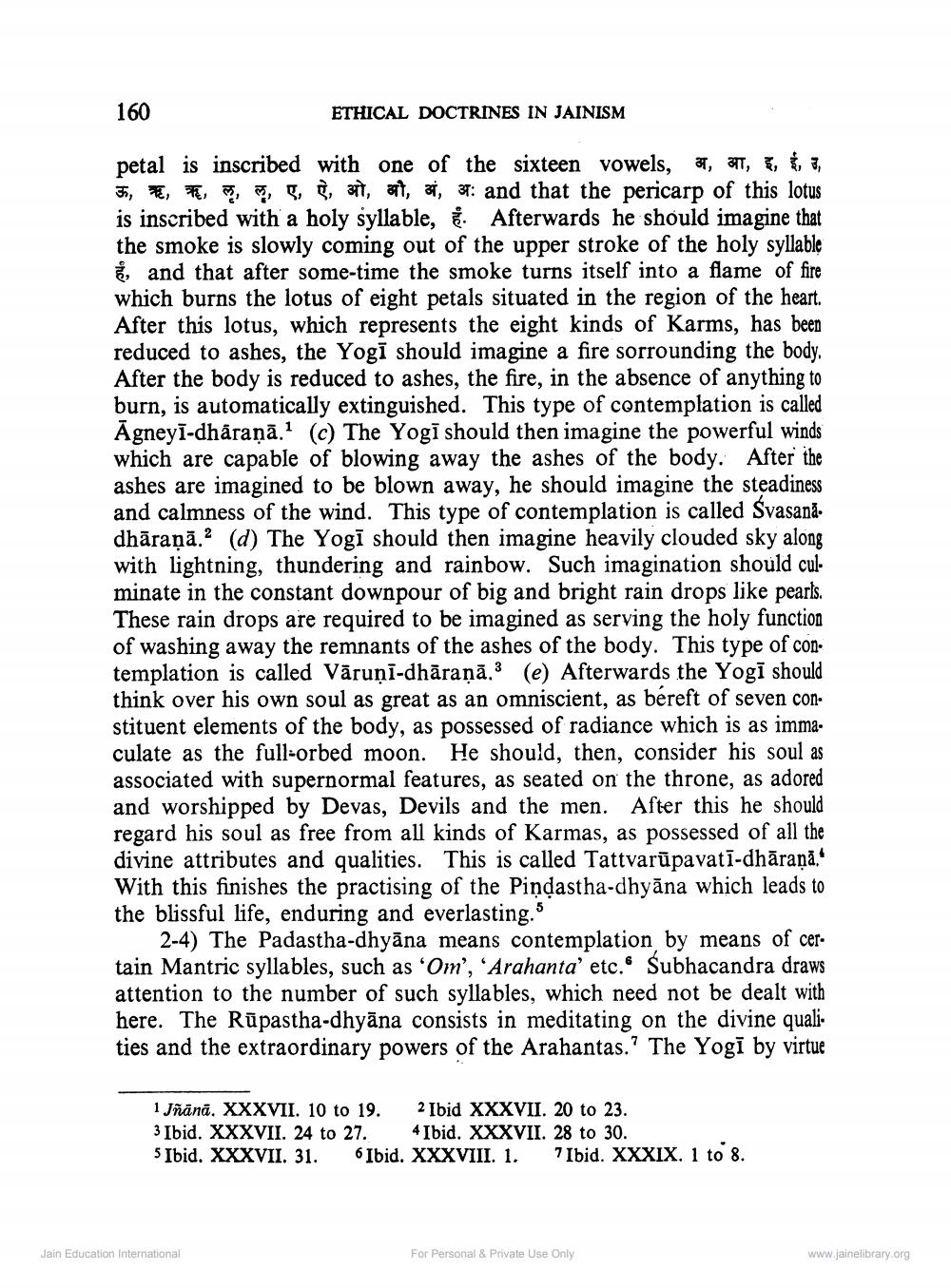________________
160
ETHICAL DOCTRINES IN JAINISM
petal is inscribed with one of the sixteen vowels, 37, 3, 5, 6, 3, 3, , , , , , , , at, 31, 37: and that the pericarp of this lotus is inscribed with a holy syllable, & Afterwards he should imagine that the smoke is slowly coming out of the upper stroke of the holy syllable
, and that after some-time the smoke turns itself into a flame of fire which burns the lotus of eight petals situated in the region of the heart. After this lotus, which represents the eight kinds of Karms, has been reduced to ashes, the Yogī should imagine a fire sorrounding the body. After the body is reduced to ashes, the fire, in the absence of anything to burn, is automatically extinguished. This type of contemplation is called Āgneyi-dharaņā." (c) The Yogi should then imagine the powerful winds which are capable of blowing away the ashes of the body. After the ashes are imagined to be blown away, he should imagine the steadiness and calmness of the wind. This type of contemplation is called Svasanā. dhāranā.2 (d) The Yogi should then imagine heavily clouded sky alons with lightning, thundering and rainbow. Such imagination should culminate in the constant downpour of big and bright rain drops like pearls. These rain drops are required to be imagined as serving the holy function of washing away the remnants of the ashes of the body. This type of contemplation is called Väruņi-dhāraņā.3 (e) Afterwards the Yogi should think over his own soul as great as an omniscient, as bereft of seven constituent elements of the body, as possessed of radiance which is as imma. culate as the full-orbed moon. He should, then, consider his soul as associated with supernormal features, as seated on the throne, as adored and worshipped by Devas, Devils and the men. After this he should regard his soul as free from all kinds of Karmas, as possessed of all the divine attributes and qualities. This is called Tattvarūpavati-dhāraṇā." With this finishes the practising of the Pindastha-dhyāna which leads to the blissful life, enduring and everlasting.
2-4) The Padastha-dhyāna means contemplation by means of certain Mantric syllables, such as 'Om', 'Arahanta' etc. Subhacandra draws attention to the number of such syllables, which need not be dealt with here. The Rūpastha-dhyāna consists in meditating on the divine qualities and the extraordinary powers of the Arahantas.? The Yogi by virtue
1 Jñānā. XXXVII. 10 to 19. 2 Ibid XXXVII. 20 to 23. 3 Ibid. XXXVII. 24 to 27. 4 Ibid. XXXVII. 28 to 30. 5 Ibid. XXXVII. 31. Ibid. XXXVIII. 1. Ibid. XXXIX. 1 to 8.
Jain Education International
For Personal & Private Use Only
www.jainelibrary.org




